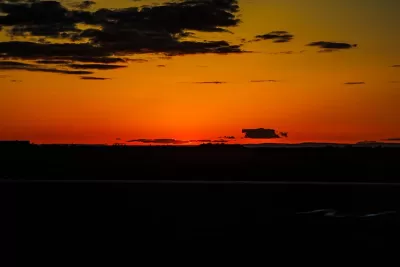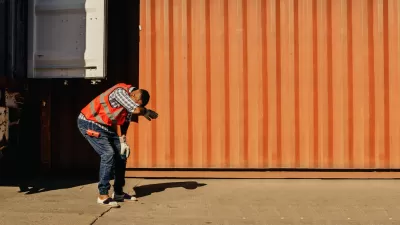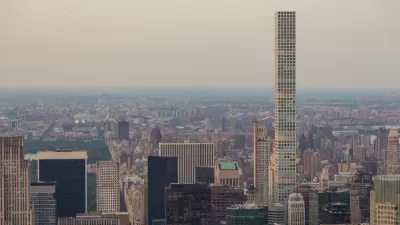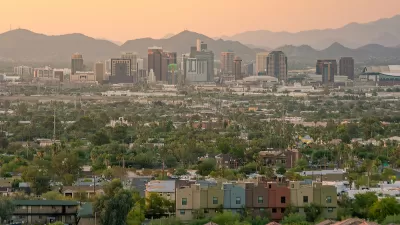This summer's heat waves wreaked havoc on physical infrastructure, but also highlighted vulnerabilities in our social support systems.

"In an era of escalating climate change," asserts Sarah Kaplan, "extreme heat is the United States’ most fatal form of weather disaster. Already this summer, hundreds of Americans have lost their lives amid a series of record-setting heat waves that scientists say would not have happened if not for human-caused warming." In Oregon and across the Pacific Northwest, "[r]oads have buckled, and train cables have melted. Emergency departments were overwhelmed."
In addition to physical infrastructure, officials "are realizing their social infrastructure is equally in need of repair. Long-standing inequities in housing and health care put the region’s poorest residents at greatest risk. Official warnings and government services didn’t reach those who most needed the help. Almost every victim of the heat wave died alone," Kaplan writes.
"When the heat dome scorched the state last month, Oregon did not have a heat early warning and response system, the gold standard for disaster planning. Residents in the typically temperate region didn’t know how to cope with extreme temperatures" and many didn't receive information about how to protect themselves.
"The most effective strategy for preventing heat deaths is direct outreach, experts say. After a brutal nine-day heat wave killed 118 people in Philadelphia in 1993, the city implemented one of the nation’s most robust heat response programs." Later, "[a] study by a team of Boston researchers found that the Philadelphia system averted an average of 45 deaths per year."
According to Gabriela Goldfarb, manager of the Oregon Health Authority (OHA)'s environmental public health section, "[p]reventing deaths during climate disasters is not just about emergency response, but rather "about building 'social resilience,' addressing the isolation and inequality that make people vulnerable in the first place" by reducing the effects of urban heat islands, expanding access to health care, and funding better outreach for marginalized communities.
FULL STORY: Heat waves are dangerous. Isolation and inequality make them deadly.

Maui's Vacation Rental Debate Turns Ugly
Verbal attacks, misinformation campaigns and fistfights plague a high-stakes debate to convert thousands of vacation rentals into long-term housing.

Planetizen Federal Action Tracker
A weekly monitor of how Trump’s orders and actions are impacting planners and planning in America.

In Urban Planning, AI Prompting Could be the New Design Thinking
Creativity has long been key to great urban design. What if we see AI as our new creative partner?

Cal Fire Chatbot Fails to Answer Basic Questions
An AI chatbot designed to provide information about wildfires can’t answer questions about evacuation orders, among other problems.

What Happens if Trump Kills Section 8?
The Trump admin aims to slash federal rental aid by nearly half and shift distribution to states. Experts warn this could spike homelessness and destabilize communities nationwide.

Sean Duffy Targets Rainbow Crosswalks in Road Safety Efforts
Despite evidence that colorful crosswalks actually improve intersection safety — and the lack of almost any crosswalks at all on the nation’s most dangerous arterial roads — U.S. Transportation Secretary Duffy is calling on states to remove them.
Urban Design for Planners 1: Software Tools
This six-course series explores essential urban design concepts using open source software and equips planners with the tools they need to participate fully in the urban design process.
Planning for Universal Design
Learn the tools for implementing Universal Design in planning regulations.
Appalachian Highlands Housing Partners
Gallatin County Department of Planning & Community Development
Heyer Gruel & Associates PA
Mpact (founded as Rail~Volution)
City of Camden Redevelopment Agency
City of Astoria
City of Portland
City of Laramie





























